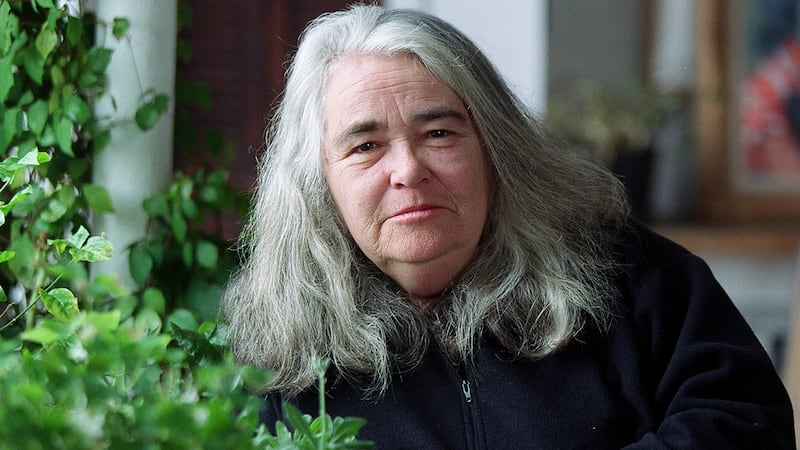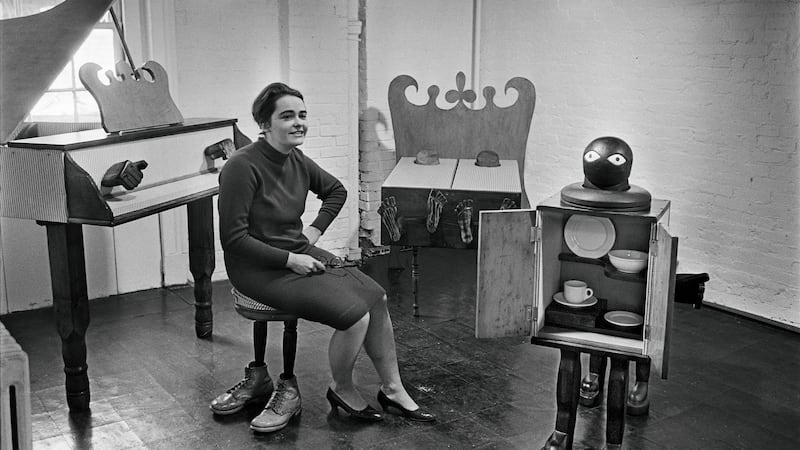Kate Millett, one of the great founding mothers of the feminist revolution is dead. She was 83 and died of a heart attack in Paris on Wednesday, one of her favourite cities, her partner of many years by her side. And, as one of her thousands of friends posted on Twitter, “she died in the saddle, about to attend a Simone de Beauvoir conference”.
Brava!
The daughter of Irish-American parents, her father an alcoholic who beat his wife and kids and then abandoned them when Kate was 14 , her mum was an early feminist, who worked and supported the family. A brilliant scholar, Millett completed a degree in the US then, supported by an aunt, got into Oxford and was the first American woman to graduate with first class honours though later she said the most important thing she did at Oxford was read, and absorb, Simone de Beauvoir’s stomping masterpiece, The Second Sex.
She was arrested at Shannon Airport and chucked into the local asylum from where she was miraculously rescued by feminist June Levine and psychiatrist Ivor Browne

Millett married Fumio Yoshimura, a Japanese sculptor, lived a short while in Japan, then returned to the US, and New York, where she became involved in bohemia, the art world and crucially radical and feminist politics. She was part of “second wave feminism” when there were only 15 of them in New York. Imagine, 15!
Chucked out of a teaching post in Barnard for supporting student demonstrations she turned to her dissertation and began “working furiously”. Like de Beauvoir she was hugely well read and fearlessly took on the then heroes of the Left, the self styled “sexual revolutionaries” – DH Lawrence, Henry Miller, Norman Mailer and Jean Genet, with Freud getting a good pummelling along the way for his “penis envy” nonsense.
Far from being the sexual revolutionaries of their age, Millet said, their prose, with its endless objectification of women, a reduction of them to the often violent sexual gratification men could get from “penetrating” them as they, the women, supposedly gagged on a 24-hour basis for the mighty phallus, was nasty, vicious and misogynistic. It showed “contempt and disgust” for women, “neurotic hostility” and “virulent sexism”, she wrote.
Far from being heroes they were counter-revolutionaries doing patriarchy’s dirty work, lauding the endless domination/subjugation theme of male literature.
Not only was misogyny at this literature’s core, but literature, argued Millet, informed and was informed by cultural practice. It’s so obvious now but back then the Left was so busy fighting these guys being censored that it seemed to ignore what was actually being said about women. British feminist Sheila Jeffreys goes further, saying not even Kate Millett could have foreseen the multitrillion-dollar pornography industry that she believes grew from these men’s depictions of woman.
That this kind of brutal misogyny lives and thrives in our own time is evidenced in Donald Trump’s “grab ‘em by the pussy” remarks.
In Sexual Politics, Millett wrote of a relationship between the sexes that was institutionalised, a form of “interior colonization”, an oppression “sturdier than any form of segregation, and more rigorous than class stratification”.
“However muted its appearance may be,” she wrote, “sexual dominion obtains nevertheless as perhaps the most pervasive ideology of our culture and provides its most fundamental concept of power.”
Of her theory Millet said she’d listened back “rhapsodically” to early versions, given as a talk in Cornell University, and told an interviewer: “It was a fiery little speech directed at girls, witty and tart and stuff like that – at least I thought it was. It needed a job of editing, but at the time, I thought it was glorious.”

It surely was. And thousands upon thousands of women, and men, thought it was too. Print run after print run sold out.
Totally unprepared for overnight fame, Millett was shoved into the limelight, deemed a spokesperson for the Women’s Movement, had her portrait in Time magazine, and was in demand everywhere.
Initially fame was “amusing”, but very quickly it turned dark. Millett said she was worn down by a “ruin of interviews, articles, attacks. Soon it grew tedious, an indignity,” she wrote in Flying, published in 1974. “Never get too famous,” she said in a BBC Four documentary. “Then you’re just a mark and everyone shoots at you.”
A personal crisis added to the drama. Now identifying as bisexual (she was still married to Yoshimura), it became a stance difficult to maintain. As Millet wrote later, “The line goes, inflexible as a fascist edict, that bisexuality is a cop-out”, and she was painfully “outed” at a meeting in Colombia. An activist stood up and yelled, “Are you a lesbian? Say it. Are you?” “Five hundred people looking at me” Millett wrote, “Everything pauses, faces look up in terrible silence. I hear them not breathe. That word in public, the word I waited half a lifetime to hear. Finally I am accused. “Say it. Say you are a lesbian!”
Added to the personal trauma Millet remembers how all the academics and pundits then went round saying, “O my God, she’s a queer, everything she wrote before is nonsensical”.
These days, thanks to women like Kate Millet, coming out as a lesbian would be entirely different. Back then, lesbians were looked on with disfavour even within the Women’s Movement. Known disparagingly as the “lavender menace”, they were deemed to threaten the movement’s “respectability”. Millet found it saddening, and deeply hypocritical. That the societal lie that gender stereotypes are natural rather than cultural had to be endlessly challenged for women to gain their freedom. “There is no way out of such a dilemma but to rebel and be broken, (be) stigmatized and cured.”
Millett herself was thoroughly broken. Following all the fame and fortune she had a breakdown. The usual hospital treatment with pills and labels ensued with an extraordinary sojourn in Ireland where she’d come to visit and was arrested at Shannon Airport and chucked into the local asylum from where she was miraculously rescued by feminist June Levine and her psychiatrist partner, Ivor Browne.
Back home in the feminists/artists colony she’d founded with her money from Sexual Politics and where she grew Christmas trees – a crop she reckoned even disorganised artists could probably raise without killing – she wrote and lectured, but sadly spent many years isolated and almost forgotten. Sexual Politics was out of print until very recently (2016) when it was republished by Colombia, with a foreword by Rebecca Mead of the New York Times, making it available to a whole new, eager audience.
She wrote nine other books, but Sexual Politics remains the one she is best known for. As friend and fellow feminist Andrea Dworkin wrote when it was first published, “the world was sleeping and Kate Millet woke it up”.
That she managed to stay alive herself until the grand age of 83 is remarkable. Bent almost double over a walker, crippled with arthritis and failing health, her mind was as strong as ever. No martyr to the cause, she loved life, remembering the early, heady days of resistance. She wrote: “The happiness of those times, the joy of participation, the excitement of being part of my own time, of living on the edge, of being so close to events you can almost intuit them. To raise one’s voice in protest, just as the protest is expressed in life, in the streets, in relationships and friendships.”
Hell yeah!
Rest in power Kate, as the American sisters say; you did everything. And more.
Rosita Sweetman is author of the pioneering On Our Knees (1972) and On Our Backs (1979), profiles and interviews that charted the changing mores of late twentieth-century Ireland, and the bestselling novel Fathers Come First (1974)






















